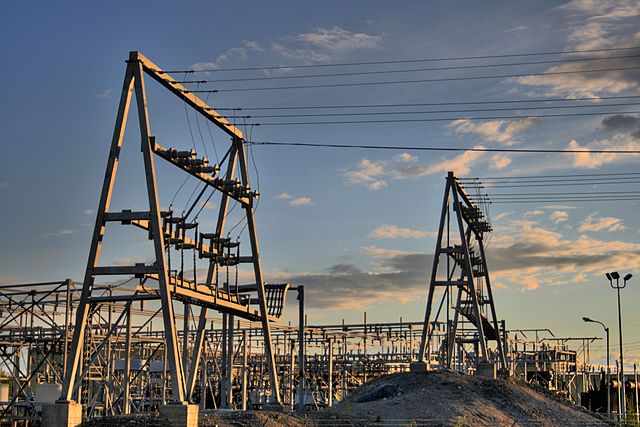A distribution transformer or service transformer is a transformer that provides a final voltage transformation in the electric power distribution system, stepping down the voltage used in the distribution lines to the level used by the customer.
The invention of a practical efficient transformer made AC power distribution feasible; a system using distribution transformers was demonstrated as early as 1882.
Single-phase distribution transformer in Canada
Two three-phase transformers in Hungary
Phase-to-phase transformer in Britain
Primary line on the right toward the front and secondary lines in the back of this single-phase transformer
Electric power distribution
Electric power distribution is the final stage in the delivery of electricity. Electricity is carried from the transmission system to individual consumers. Distribution substations connect to the transmission system and lower the transmission voltage to medium voltage ranging between 2 kV and 33 kV with the use of transformers. Primary distribution lines carry this medium voltage power to distribution transformers located near the customer's premises. Distribution transformers again lower the voltage to the utilization voltage used by lighting, industrial equipment and household appliances. Often several customers are supplied from one transformer through secondary distribution lines. Commercial and residential customers are connected to the secondary distribution lines through service drops. Customers demanding a much larger amount of power may be connected directly to the primary distribution level or the subtransmission level.
A 50 kVA pole-mounted distribution transformer
Substation near Yellowknife, in the Northwest Territories, Canada
High voltage power pole in rural Butte County, California






